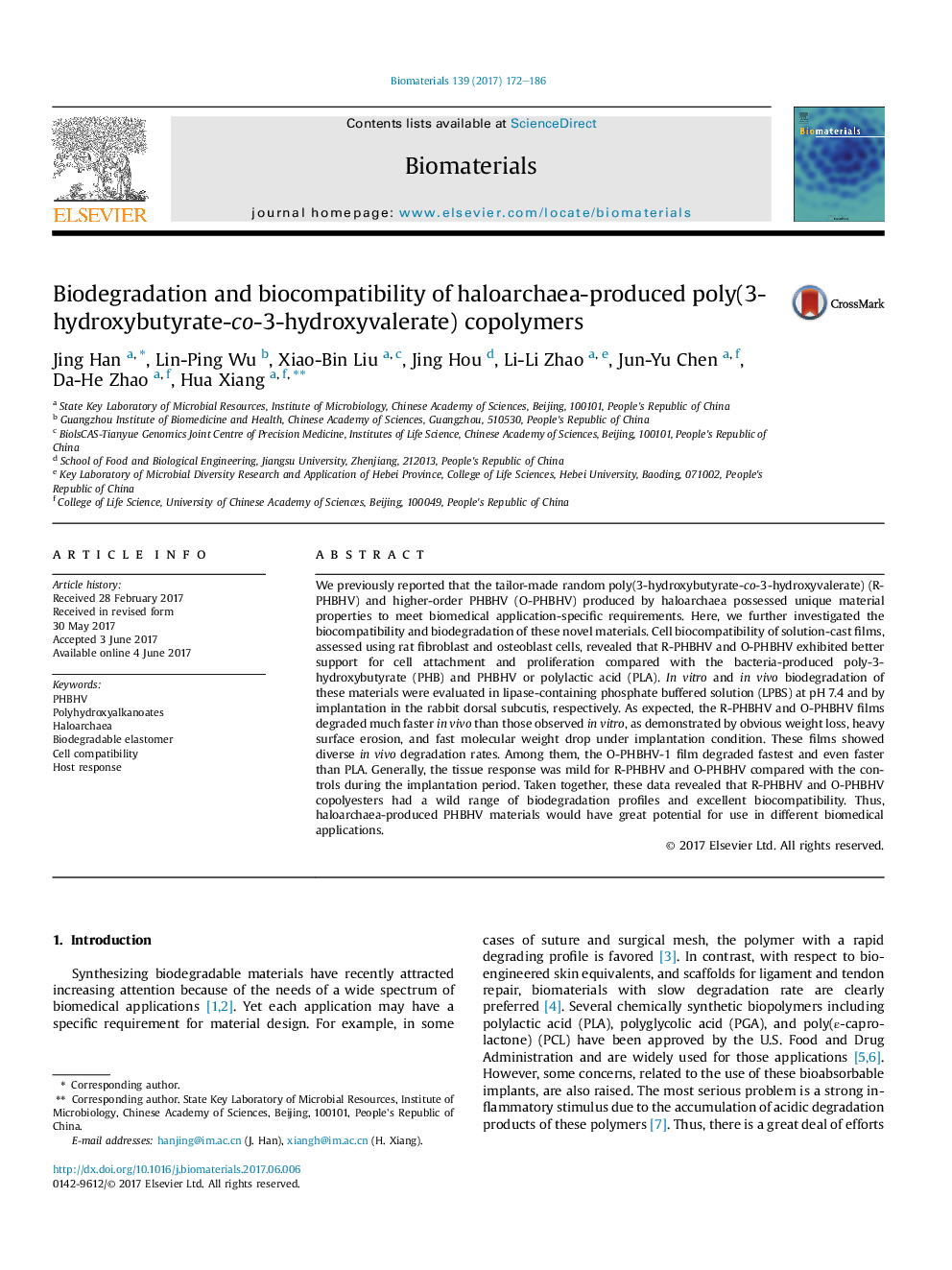| Article ID | Journal | Published Year | Pages | File Type |
|---|---|---|---|---|
| 6450654 | Biomaterials | 2017 | 15 Pages |
We previously reported that the tailor-made random poly(3-hydroxybutyrate-co-3-hydroxyvalerate) (R-PHBHV) and higher-order PHBHV (O-PHBHV) produced by haloarchaea possessed unique material properties to meet biomedical application-specific requirements. Here, we further investigated the biocompatibility and biodegradation of these novel materials. Cell biocompatibility of solution-cast films, assessed using rat fibroblast and osteoblast cells, revealed that R-PHBHV and O-PHBHV exhibited better support for cell attachment and proliferation compared with the bacteria-produced poly-3-hydroxybutyrate (PHB) and PHBHV or polylactic acid (PLA). In vitro and in vivo biodegradation of these materials were evaluated in lipase-containing phosphate buffered solution (LPBS) at pH 7.4 and by implantation in the rabbit dorsal subcutis, respectively. As expected, the R-PHBHV and O-PHBHV films degraded much faster in vivo than those observed in vitro, as demonstrated by obvious weight loss, heavy surface erosion, and fast molecular weight drop under implantation condition. These films showed diverse in vivo degradation rates. Among them, the O-PHBHV-1 film degraded fastest and even faster than PLA. Generally, the tissue response was mild for R-PHBHV and O-PHBHV compared with the controls during the implantation period. Taken together, these data revealed that R-PHBHV and O-PHBHV copolyesters had a wild range of biodegradation profiles and excellent biocompatibility. Thus, haloarchaea-produced PHBHV materials would have great potential for use in different biomedical applications.
